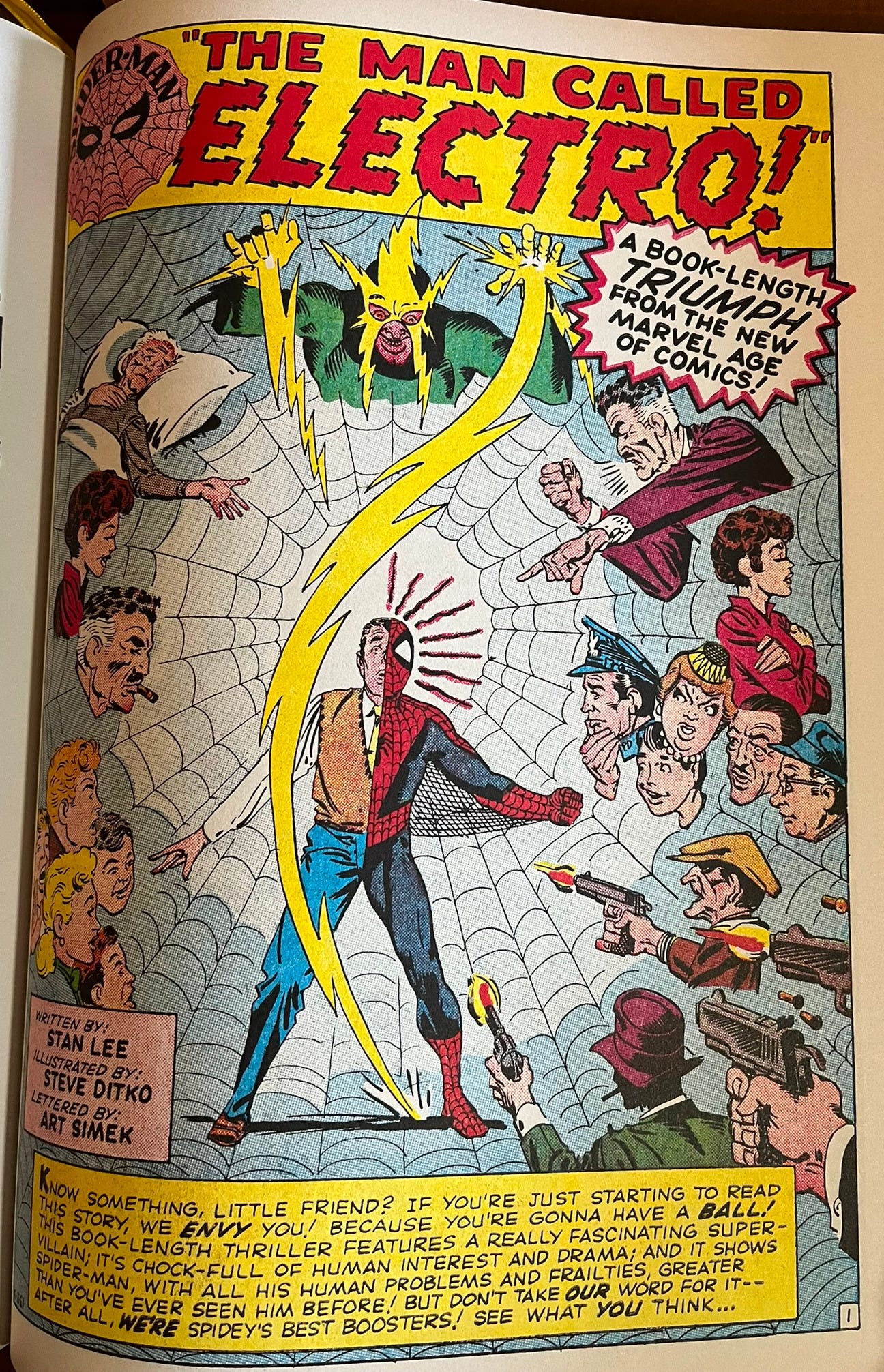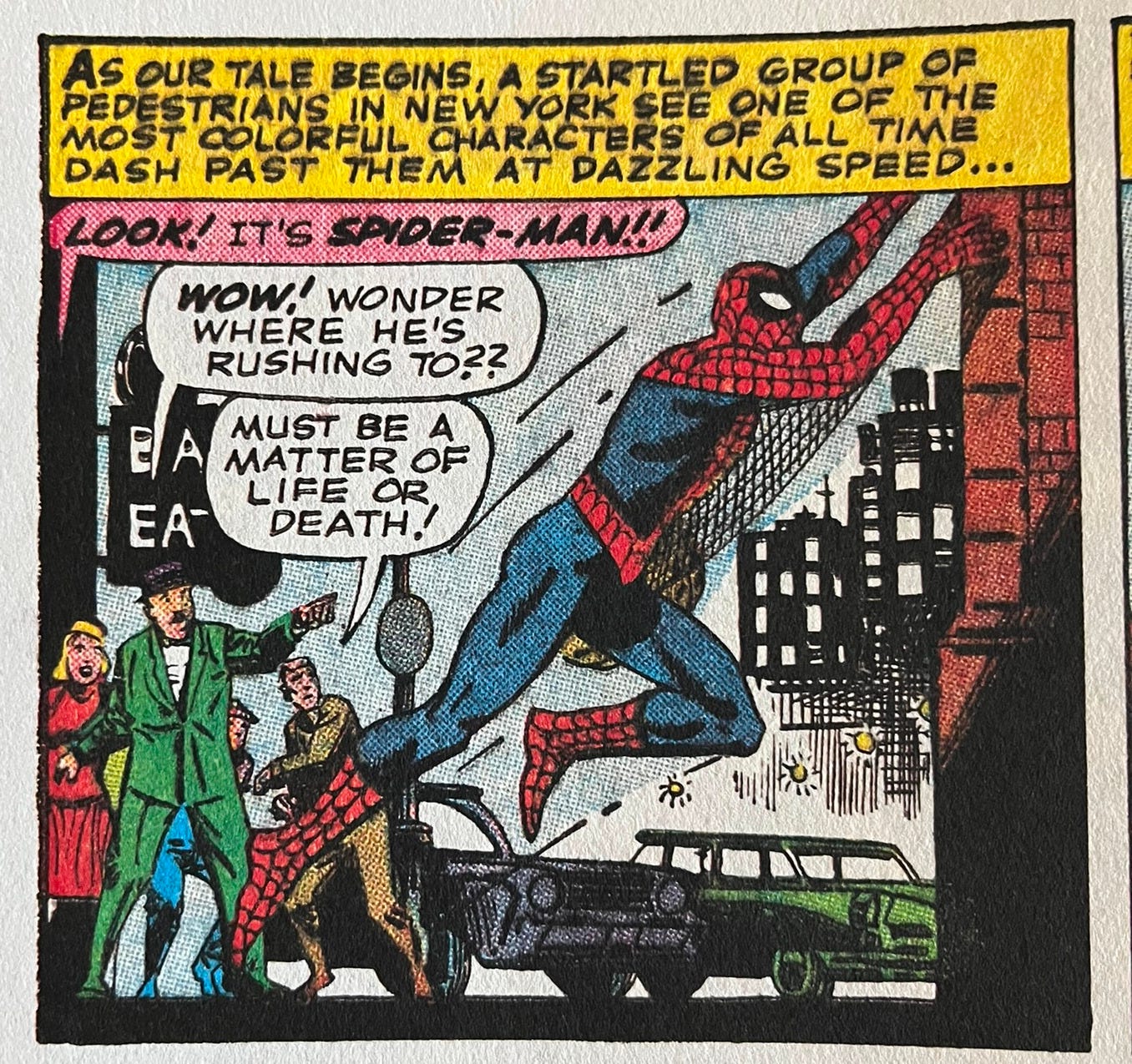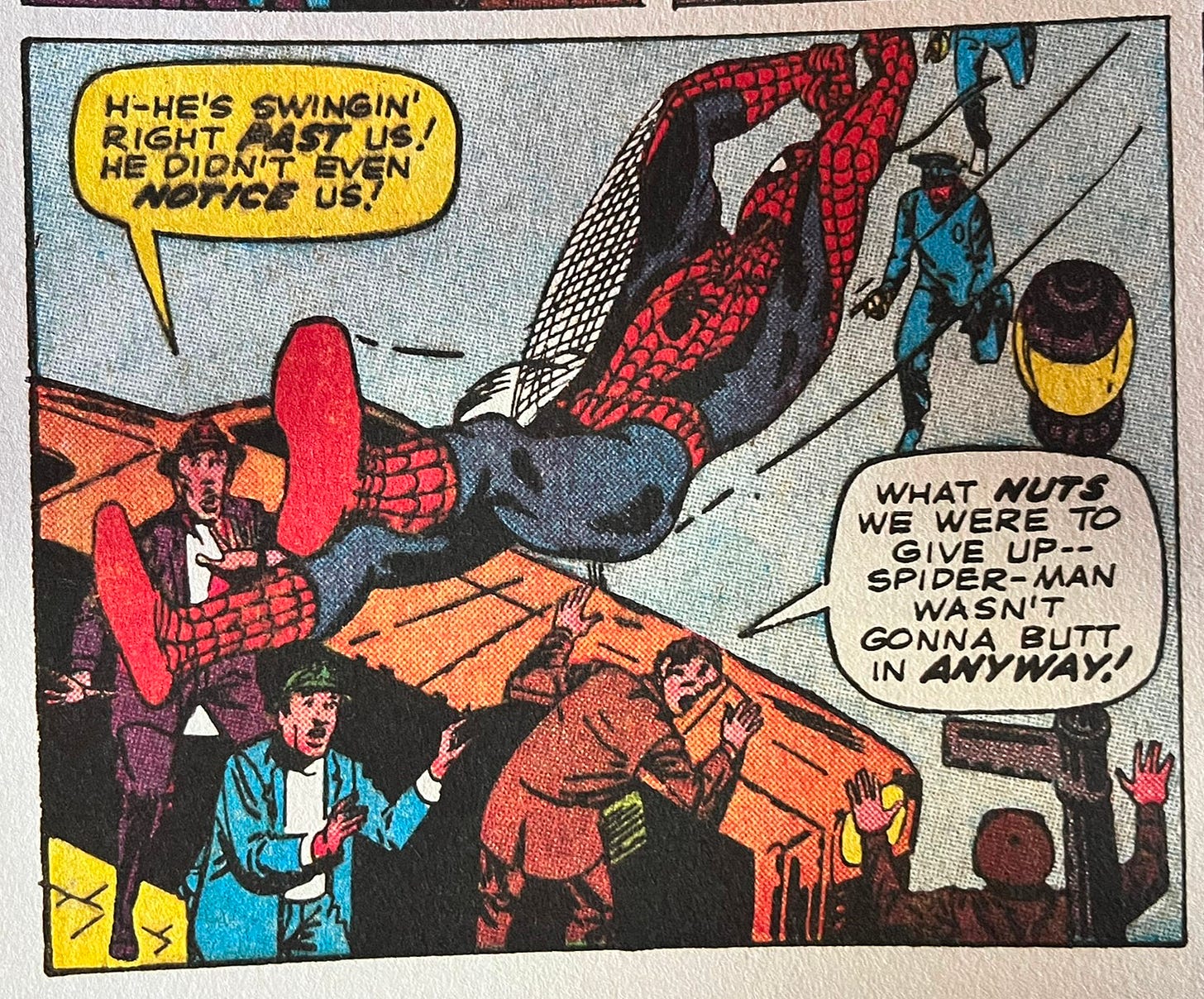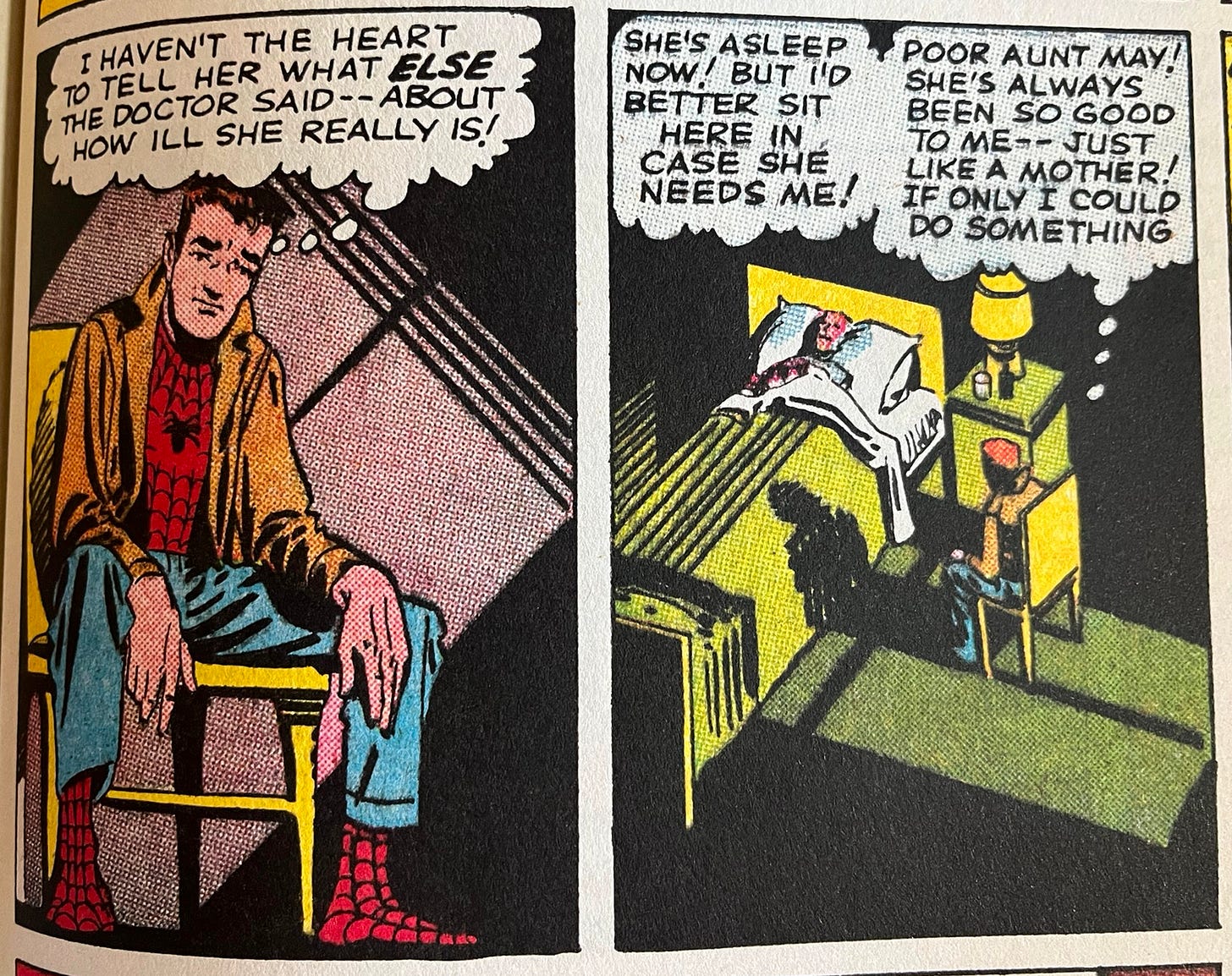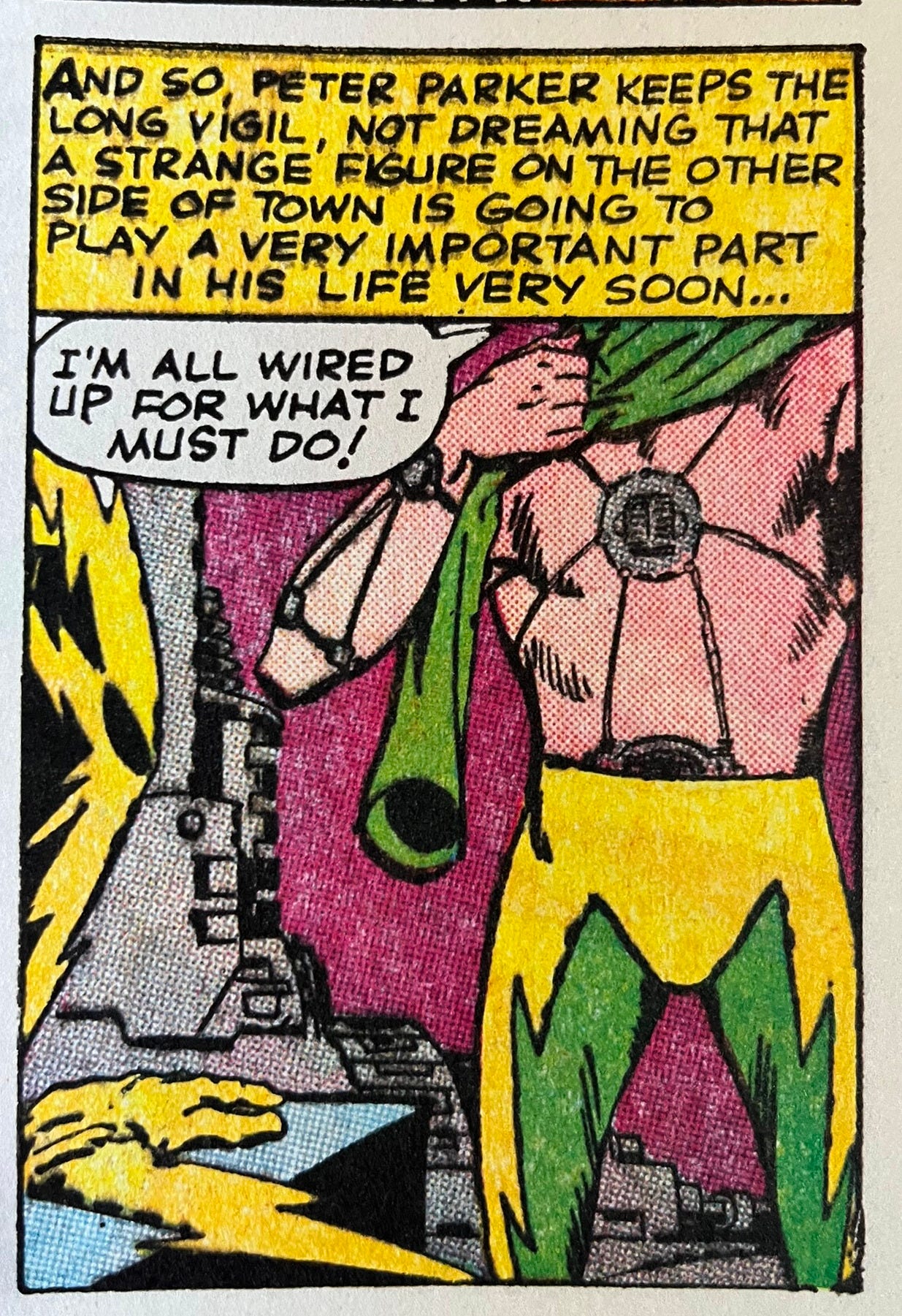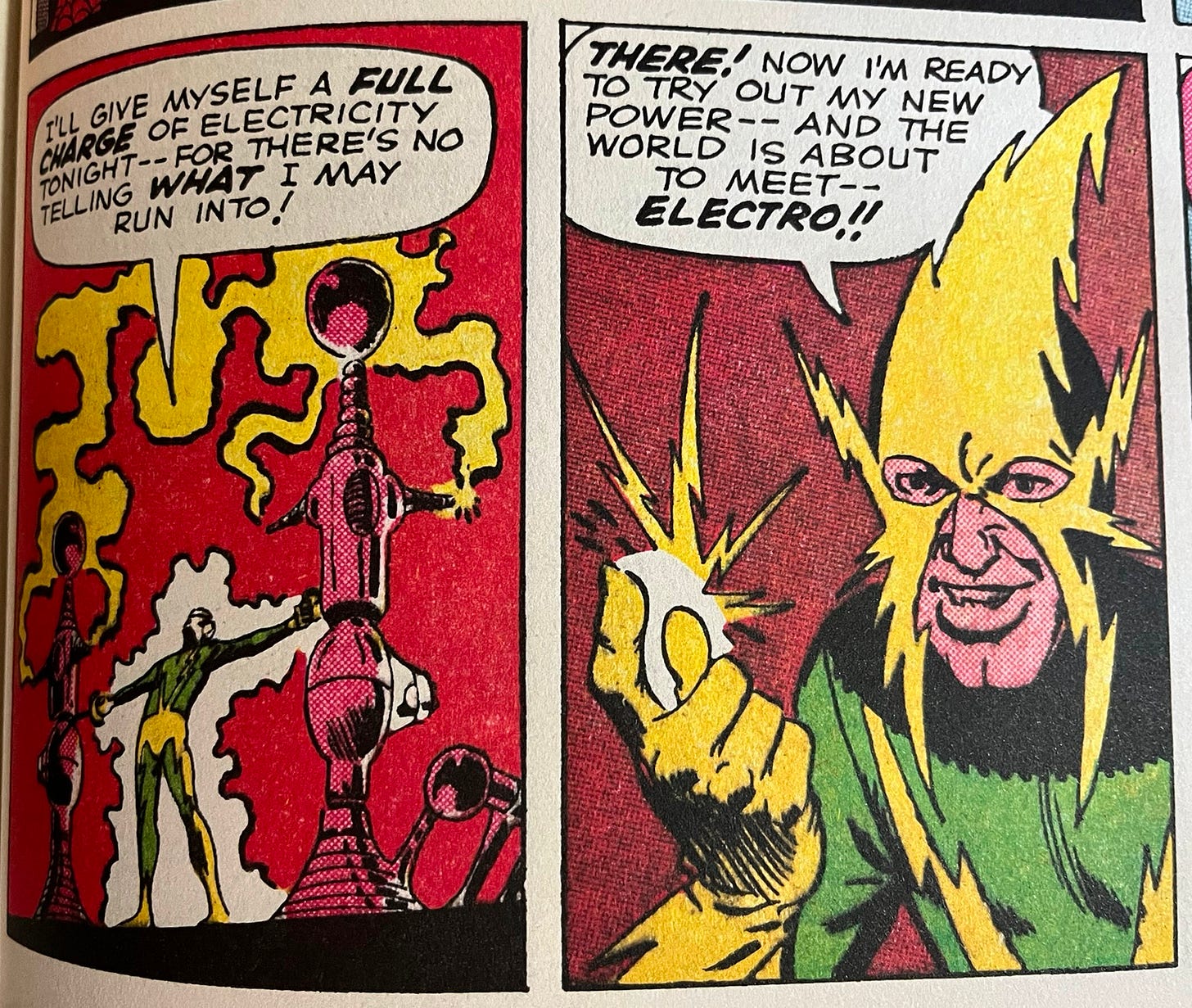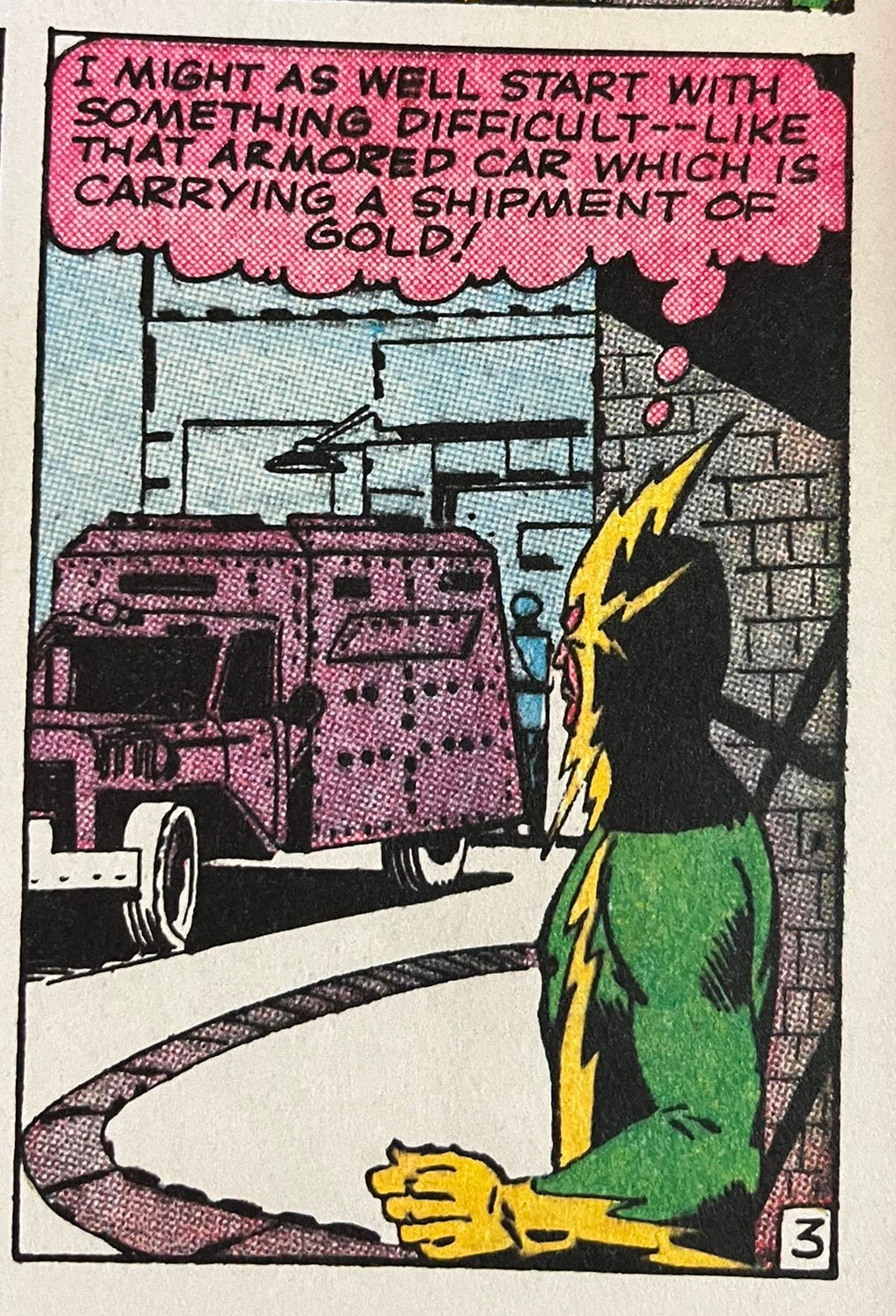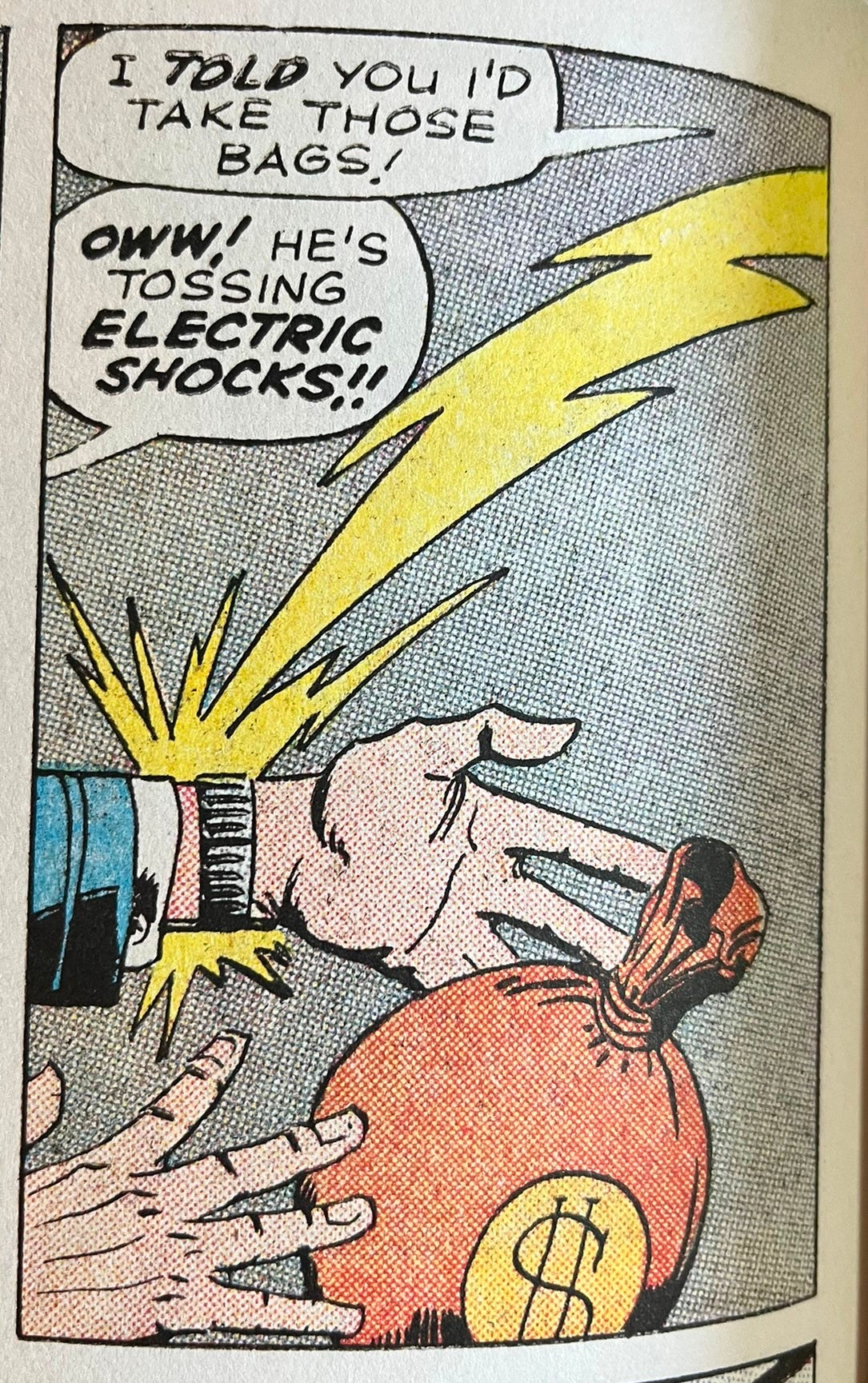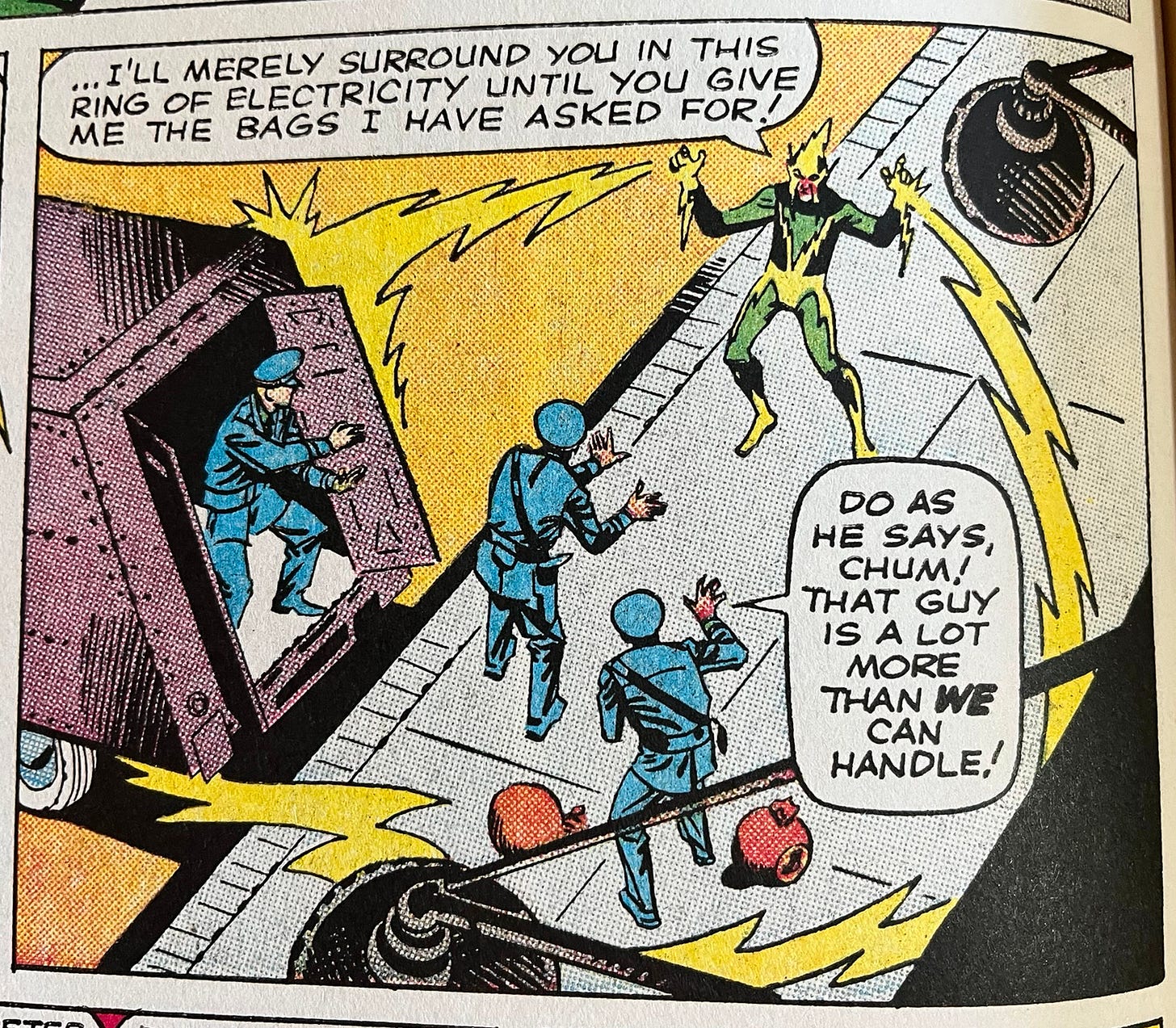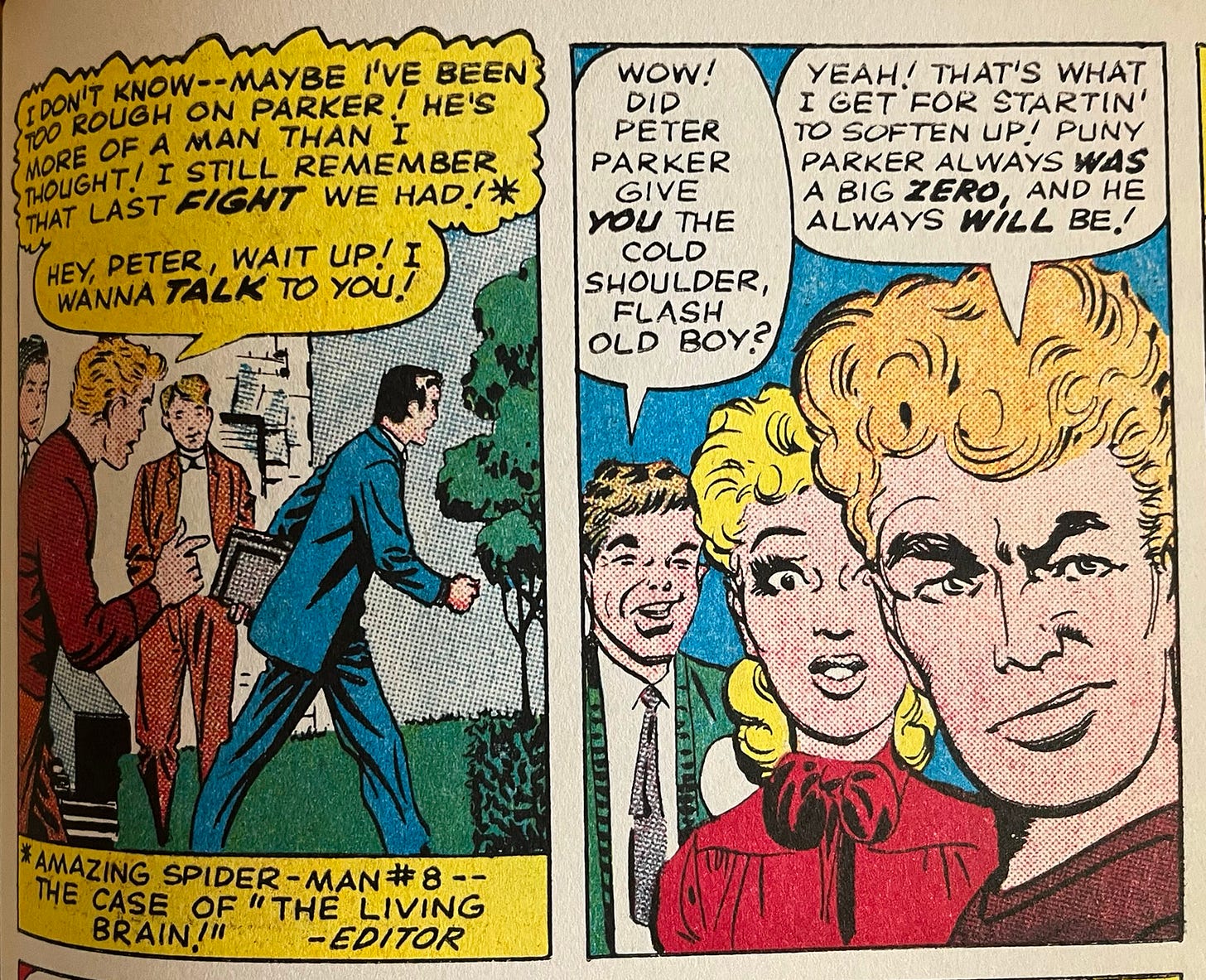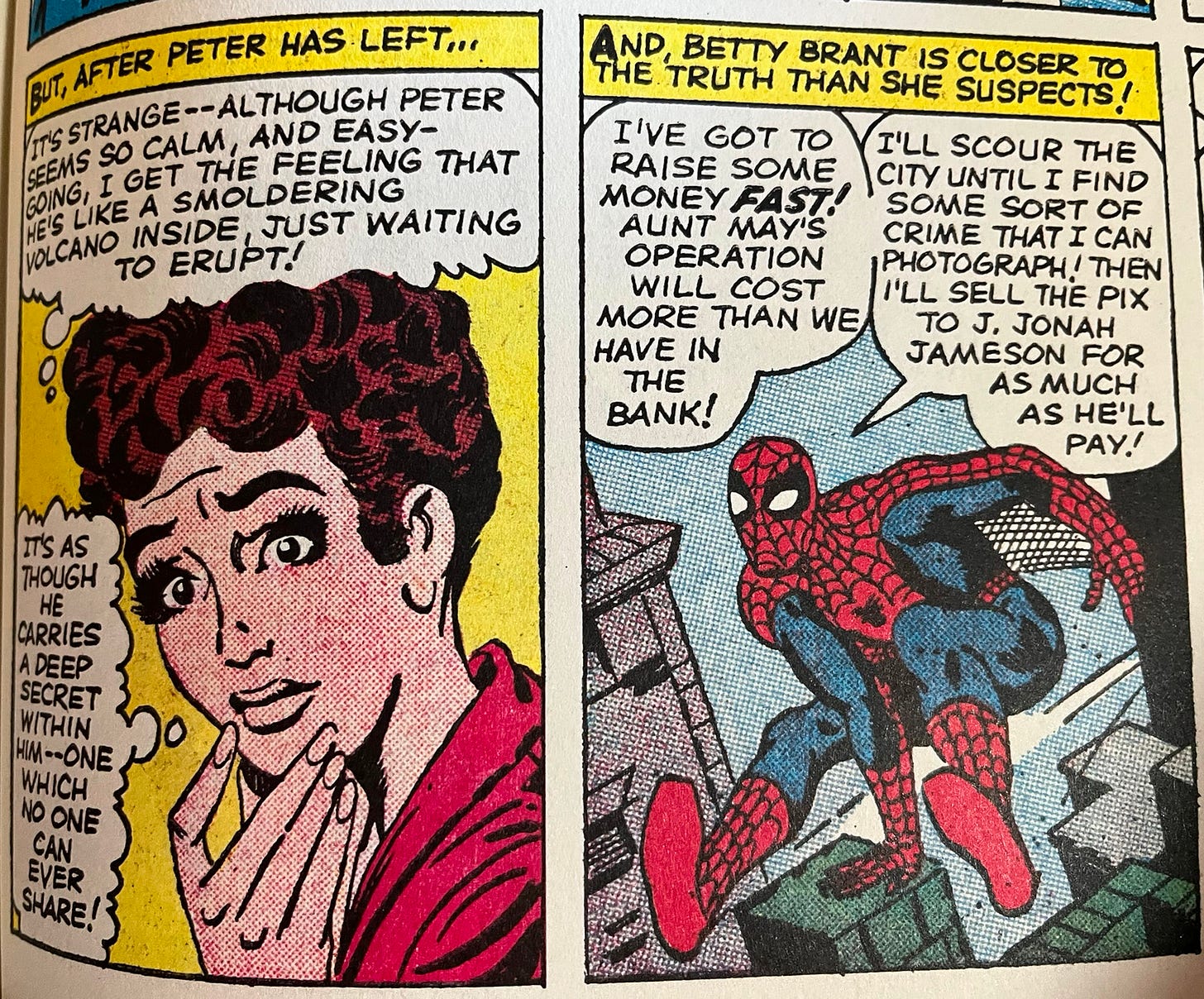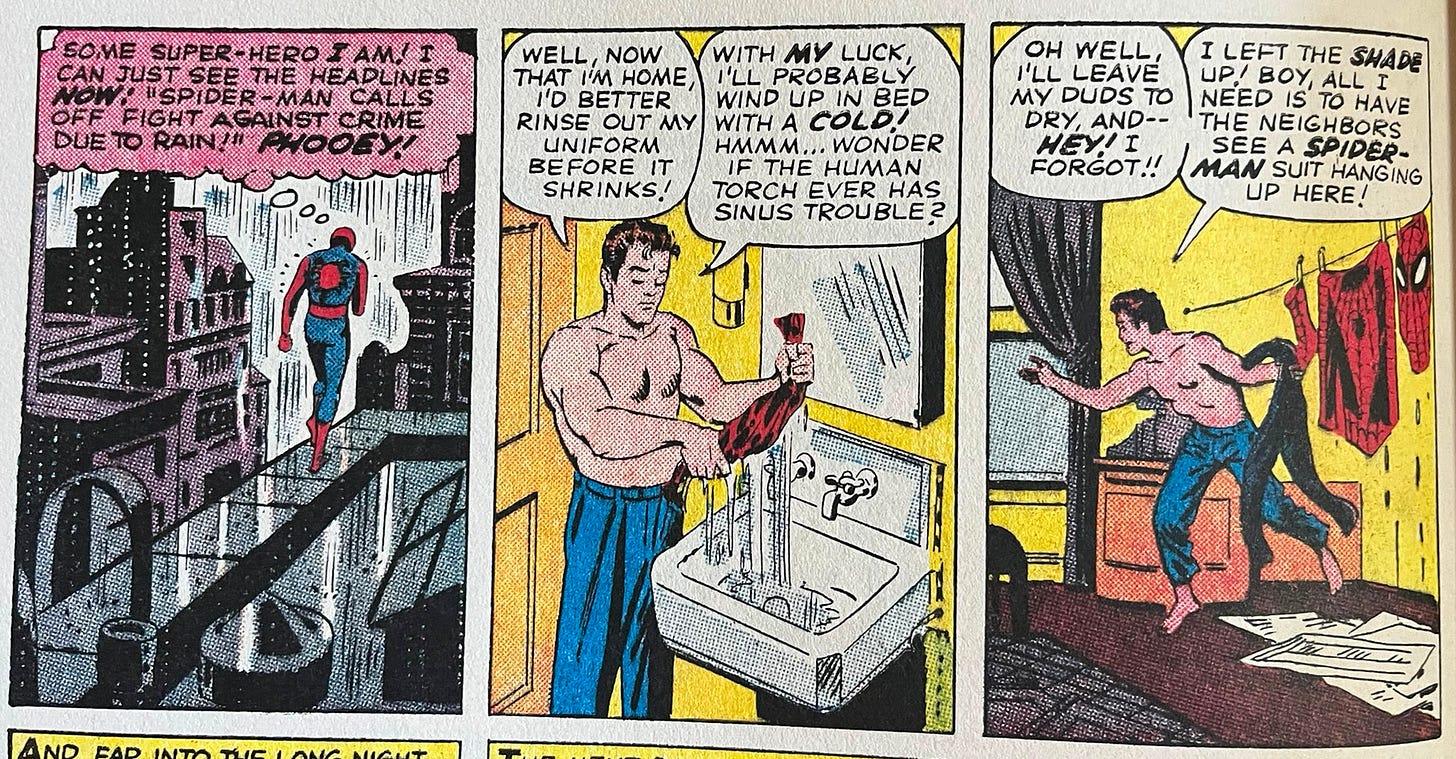The Lee/Ditko hot streak continues with another issue, and another classic Spider-Man villain debut.
The cover is pretty good, though as usual I’d prefer it if there weren’t multiple panels, or large blocks of text. Stan Lee gets points for marketing. Proclaiming that “the Marvel age of comics” is here is bold, but he turned out to be right. And the claim that Spider-Man is “the most original superhero of all time” might actually be true as well.
This opening splash page is great but imperfect. It’s the people in Peter’s life contrasted with the people in Spider-Man’s life, with a great lightning bolt running down the middle. I love that Peter’s taunting classmates are the equivalent of the crooks who are gunning down Spider-Man. My only quibble is that Betty and Jameson are on both sides of the divide. I understand that the juxtaposition shows Jameson’s indifference towards Peter versus his fanatical hatred for Spider-Man, and Betty’s interest in Peter and her contempt for Spider-Man. I just think it would be a stronger image if these characters weren’t used twice.

The cover blurb loudly proclaims that Spider-Man is “the most original superhero of all time!” and the splash page highlights, not his strength or powers, but his human problems and frailties. I’m the hundred millionth person to hit on this point a hundred million times, but it can’t be overstated how truly revolutionary it was to create a superhero with everyday problems. This idea so thoroughly reshaped the superhero genre that it’s hard to see how revolutionary it was back in 1962.
True to its repeated promises, the comic opens with Spider-Man doing something unconventional. He races towards a group of armed robbers, but doesn’t apprehend them. He just keeps on web slinging.
He’s got a bigger, more personal fish to fry. Aunt May is sick and needs medicine. Peter spends a long night watching over her as she sleeps, just in case she needs something, thinking to himself that she’s been like a mother to him.
Ditko’s art really highlights the divide between Peter and Spider-Man. The opening pages feature Spider-Man filling up most of the frame, his muscles bulging in these dynamic poses. Once he’s home, and the true weight of Aunt May’s illness hits him, he’s a small lonely figure in a big dark room, with no one and nothing to help him. He looks so defeated and despondent here.
Across town we meet this issue’s villain, Electro. Ditko draws him with some sort of energy harness, which stores the electricity he generates from Frankenstein’s lab equipment.
This is a really cool image, but I’m not sure if Electro is ever shown wearing a device or charging himself up ever again. It’s not clear here, but we find out later in the issue that his harness helps him carry even more electricity than he can innately generate. I’ve read nearly every issue of every Spider-Man book that was published until about 1992, and I don’t remember seeing this gimmick ever again. It needlessly complicates Electro and I’m glad the idea was dropped.
Oh Stan, you could have just as easily had Electro say he’s been practicing using his powers and now he can throw bolts with pinpoint accuracy. But instead, you had to make Electro say something as hilarious as “I might as well start with something difficult!” Yeah, you might as well, Electro. Slow and steady is for suckers!
This action scene is a product of its time. More charming than exciting. If Electro took down an armored car now, he would just murder the guards in a gruesome way with a bunch of electricity. But here, he very gently tosses these small little bolts of lightning, and surrounds them with a home made electric fence. I miss when superhero comics were made for kids. Spider-Man gave the genre some much needed realism, but too much realism sucks the fun out of these characters and ends up drawing even more attention to the absurdity at the heart of the genre.
Peter Parker has no idea of Electro’s delicate crime wave. His mind is completely occupied with the health of Aunt May, who needs to be hospitalized. He’s so preoccupied, in fact, that he accidentally blows off Flash Thompson, who is attempting to mend fences with Peter.
Luckily, not every teenager hates Peter like Flash does. There’s at least one person his age who likes him. Peter finds Betty visiting May in the hospital, even though at this point neither of them had ever met.
Betty describes Peter’s character better than anyone else has done before or since. Modern Spider-Man is so often written as a motor-mouthed jagoff that he comes across as an obnoxious lightweight. He’s like if your little brother got to be a superhero. Spider-Man’s breezy humor has to be balanced against a real pent up bitterness. An edge. A smoldering volcano, just waiting to erupt.
He doesn’t erupt here though, he just mopes and complains. He tries to get some crime pictures to pay May’s hospital bills but his camera isn’t good enough to work in the rain. He’s gotta wring out his costume before it shrinks, and bellyaches about how he’s probably gonna get a cold now
His neighbors almost catch him hanging up his Spider-Man costume to dry (though if he’s talking about Mary Jane, she wouldn’t be seeing anything that she hasn’t seen before) and then he settles into an unproductive study session. It’s a humdrum, fruitless evening for the world’s most original superhero. Getting annoyed at all the same stuff that would annoy the reader.
Meanwhile, Jameson gets robbed by Electro while making a deposit from the bank. Electro knows who Jameson is, which must be some sort of clue…?
Not only that, he scales a tall building. Could there be more than one person who can climb a building, or is Electro someone Jameson already knows?
Keep reading with a 7-day free trial
Subscribe to B.G.’s Substack to keep reading this post and get 7 days of free access to the full post archives.





